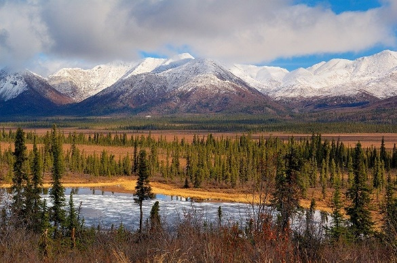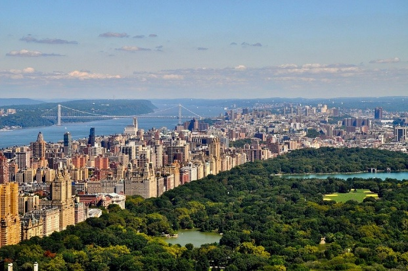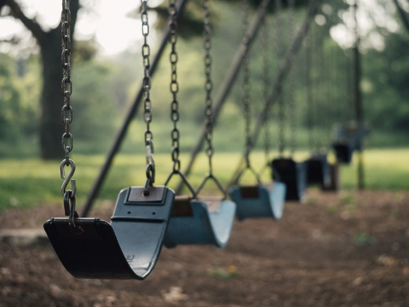- Mon-Fri 9am-4pm EST
- 888-663-4621
Across the nation, nestled in cityscapes, country sides, and residential neighborhoods are parks. Natural beauty is enjoyed by people of all ages and is a gathering place for families and social groups. Playgrounds and walking paths provide excellent options for physical activity. Parks boost the local economies and increase property values in the surrounding areas, and they are also a place where everyone is equal because there is no cost to go enjoy public parks. Although most people frequent parks and pass by them regularly, they are unaware of the many fascinating facts about the history of parks, how often they are used, and various other park-related trivia.
1. In the United States, there are 419 national park sites. (Source: National Park Foundation)
Yellowstone National Park was the first national park in the world with protections placed on the area by President Ulysses S. Grant on March 1, 1872. Theodore Roosevelt and the Boone and Crockett Club played an integral role in fighting for further conservation efforts and land protections, and other countries began to follow suit by placing protections on their treasured landmarks. Underground treasures are protected as well. Mammoth Caves National Park in Kentucky has the longest cave system in the world. The newest American national park, Indiana Dunes National Park, was added in 2019.
2. In San Francisco, the average park size is 1.3 acres. (Source: U.S. News)
In the state with the highest number of national parks, there are 220 public parks in San Francisco, and they boast some of the largest average park sizes in the nation. As the fourth largest city in California and the 14th most populous city in the United States, San Francisco is a major tourist destination with one of the visited attractions being the Golden Gate National Recreation Area. In particular, Golden Gate Park was America’s most visited park in 2018 with 15,223,697 recreational visits.

3. At over 8.3 million acres, Wrangell- St. Elias National Park in Alaska is the largest national park in the United States. (Source: WorldAtlas)
Named a national park in 1980, Wrangell- St. Elias National Park includes the massive Saint Elias Mountains. With massive glaciers, most of the United States and Canada's highest peaks lie in this south-central Alaskan park. Thousands of visitors every year are willing to face hiking in the frigid cold to capture photos of these scenic natural elements. The mining town of Kennecott lies in the park as a deserted reminder of the past where, in 1900, people came to mine for copper. In comparison, Wrangell- St. Elias National Park is more than 2,350 times larger than the smallest national park, Hot Springs National Park in Hot Springs, Arkansas.
4. Over 84 million acres of national park sites are located in the United States including territories. (Source: National Park Foundation)
With 30% of the United States' landholdings as national parks, national parks are made up of expansive amounts of land across the continental U.S., Puerto Rico, American Samoa, Guam, and the Virgin Islands. Before the 19th century, nature was only viewed as a source of food and shelter with only the wealthy concerned about keeping untouched spaces for hunting. A major shift in the way the public viewed natural landmarks led to the creation of national parks and preservation societies.
5. In the United States, a person visits a local park on average of 2+ times a month. (Source: National Recreation and Parks Association)
3 out of 4 people live within walking distance of a park, and parents with children visit parks more than any other group. Parks are comprised of more than just playgrounds, and athletes and other people use trails for biking, jogging, rollerblading, and other sporting activities. Many people select parks as an ideal location for events such as parties, family reunions, and cookouts. To draw in crowds that experience live concerts, farmers markets, theater, and festivals, towns and cities put on special events throughout the year.
6. At over 30,000 acres, McDowell Sonoran Preserve in Scottsdale, Arizona, is the largest city park in the United States. (Source: Statista)
With 225 miles of trails winding their way through McDowell Sonoran Preserve, the park's top attractions are on the trail where people flock to hike, bike, picnic, ride horses, and explore the natural beauty of the desert. The preserve has 10 interconnected trails made for non-motorized use. Permanently protected and a sustainable habitat, the preserve protects portions of the Sonoran Desert that spans Arizona, California, and Mexico. The local conservation society offers programs to educate patrons about the animals, plants, and preservation plans for the park.

7. Over 14% of New York City is comprised of parks. (NYC Parks)
As the most populous city in the United States, New York City has numerous parks and recreation areas for its many residents. As one of the most recognized parks in the country, Central Park has been a city landmark, featured in countless television shows and movies, and one of the area's greatest tourist destinations for over 150 years. In New York City, four parks are larger than Central Park at 843 acres. At 2,765 acres, Pelham Bay Park in the Bronx is the largest, and the second largest is the Greenbelt in Staten Island with 1,778 acres.
8. With over 1,500 playgrounds, New York City has the most park playgrounds in the United States and triple the amount of the next closest city. (Source: Statista)
A significant portion of the Big Apple is made up of parks, and most of those parks include playgrounds. Almost 2 million children live in New York City, and these children need a free, safe form of entertainment. Relied on by numerous families, this entertainment is found in the many playgrounds found all over the city and its boroughs. The number of playgrounds per capita is the highest in the area. The first playground in New York City was built in 1903 at Seward Park, and since then, New York City has focused on providing safe play spaces that meet the diversity and developmental needs of children.
9. Out of the 419 national park sites, only 62 sites contain “National Park” as part of their names. (Source: National Park Foundation)
Within the National Park System, there are over 20 different types of sites including national battlefields, national memorials, national monuments, and national parks. In particular, 62 locations bear the words “National Park” as part of their proper names including Grand Canyon National Park, Rocky Mountain National Park, Yellowstone National Park, and Yosemite National Park.
10. Spanning approximately 3,000 miles from Calais, Maine, to Key West, Florida, the East Coast Greenway is the longest bike trail in the United States. (Source: ManTripping)
Connecting 15 states and 450 cities, all the major cities on the Atlantic coast are connected by the East Coast Greenway. The trail was specifically created for nonmotorized transport to offer a safer biking alternative. In 1991, an alliance was formed to preserve the trail and bring it back to nature. The goal is to make the entire trail off the road, and currently, 32% is on off-road greenways. With the record for completing the entire trail by bicycle at 52 days, bicyclists from all over the globe come to test their skills.

11. In the 100 largest American cities, there are 23,727 parks. (Source: U.S. News)
When people are looking for a new place to live, the proximity of the nearest parks and recreation areas are a major consideration for 85% of Americans. The larger the city, the more parks it is likely to have. Of all the groups, millennials and parents visit parks the most frequently. The average American visits a park 27 times a year. Tourists often chose to visit the parks in large cities during their visits, and in turn, tourism dollars boost the local economy.
12. 91% of Americans view parks and recreation as an important local government service. (Source: National Recreation and Parks Association)
Parks are an essential part of a thriving community by bringing people together, enriching city centers, protecting nature, and providing an outlet for entertainment. Voters tend to support political candidates that care about the creation and preservation of parks. Countless non-profit organizations work together with its local authorities to preserve and protect parks. In many scenarios when the park location does not have the funding to make improvements, nonprofits will step in and rally with fundraisers to fill the financial gap. Now more than ever, people are paying attention to the environment and putting pressure on the government to keep parks clean, safe, and not sold to make way for new developments.
Universally beloved and enjoyed by millions are American parks. They are more than a designated section of land. Parks are a place for children to play, people to exercise, groups to gather, and for all to enjoy the bounty of nature. A significant chunk of the U.S. and its land holdings are made up of parks. American national parks are major tourist destinations drawing in hundreds of millions of guests annually. Individuals, families, and communities all benefit from their local and national parks.
You must login to post comments.